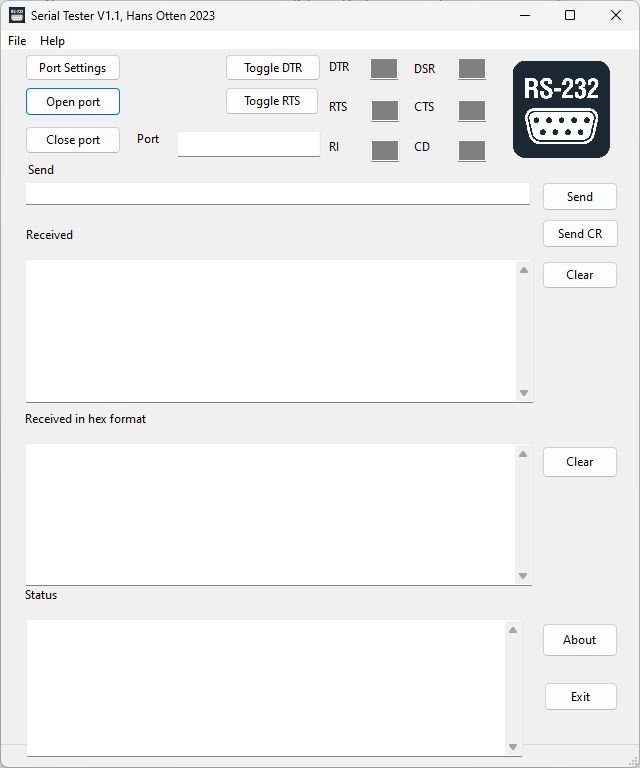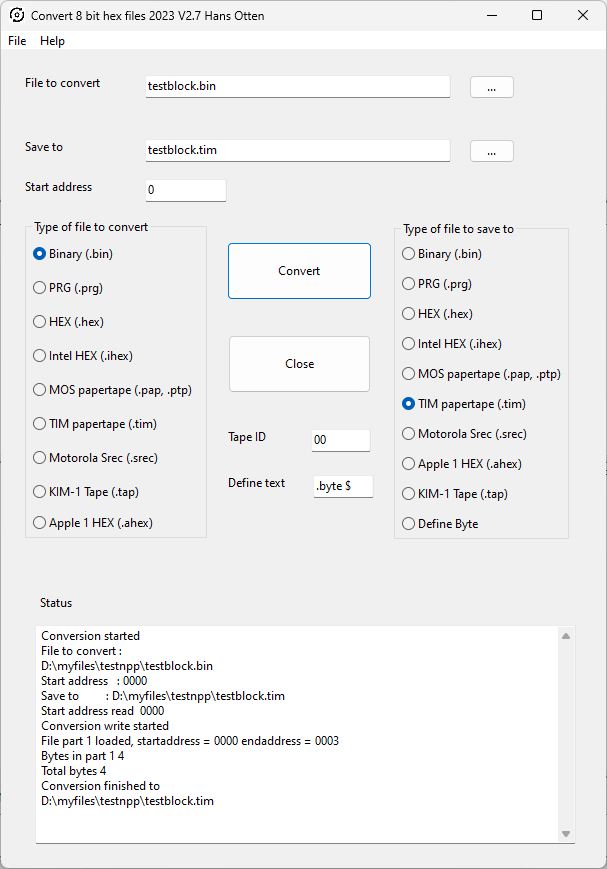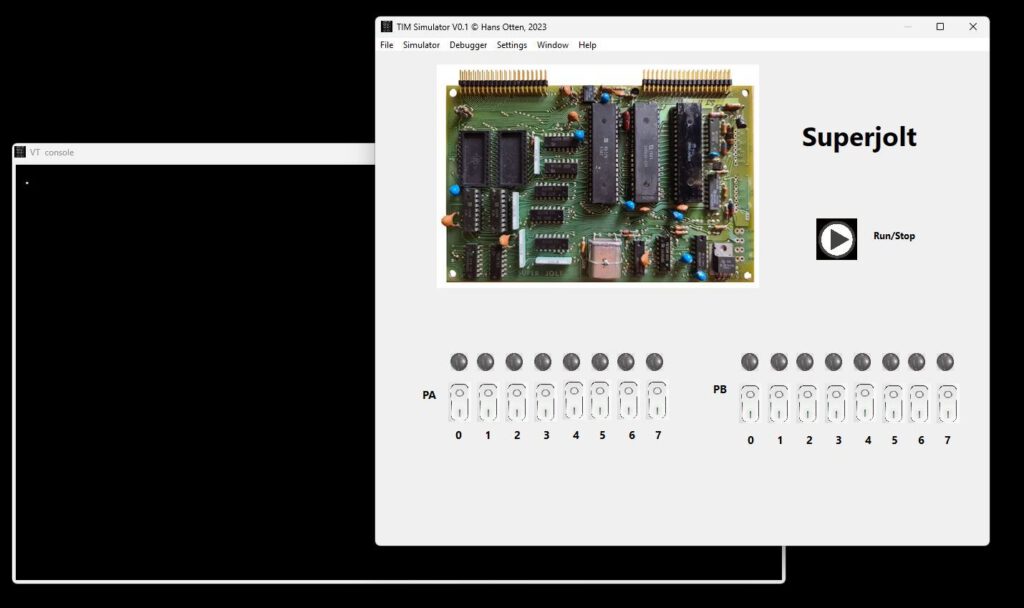By Roy Edmund Antaw
I hope others may find this useful when trying to replace 2532 ROMs.
It sure ain’t pretty, but it works perfectly.
2732 EPROM to 2532 ROM adaptor, using two 24pin sockets with three bend pins on top socket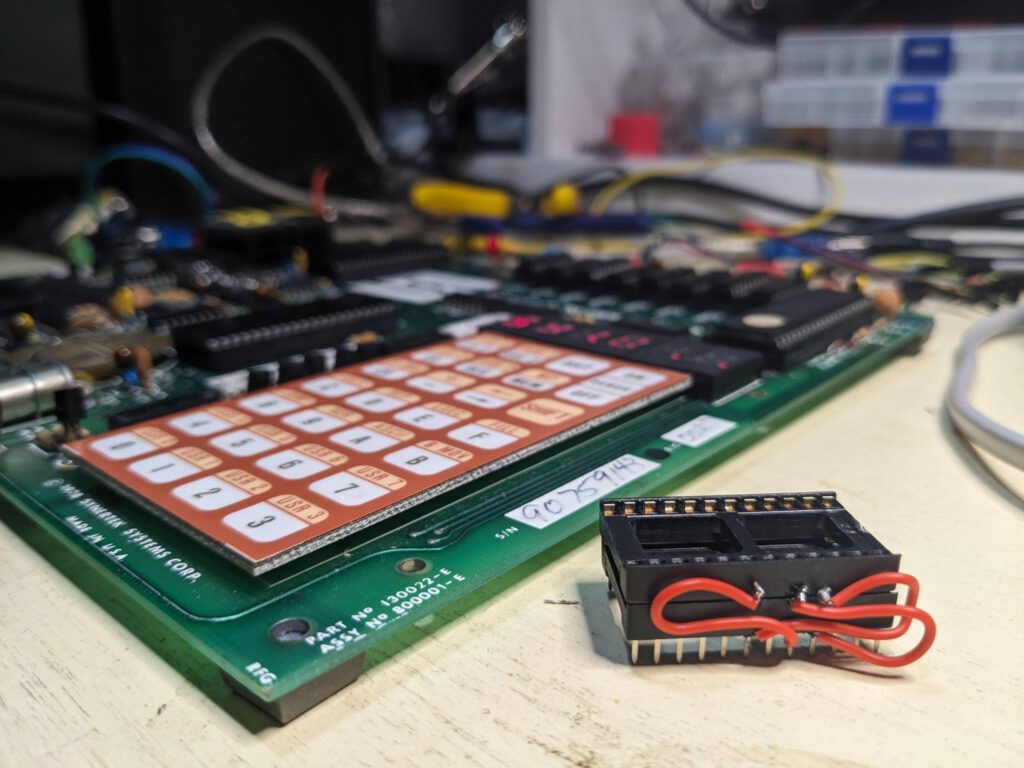
About small SBC systems
By Roy Edmund Antaw
I hope others may find this useful when trying to replace 2532 ROMs.
It sure ain’t pretty, but it works perfectly.
2732 EPROM to 2532 ROM adaptor, using two 24pin sockets with three bend pins on top socket

A Spanish firm developed a 6502 trainer, an SBC inspired by the KIM-1. Hexadecimal keyboard, 6 LED displays, I/O to experiment with. Assembled system, boxed, high quality components like mechanical keys. Aimed at education.
On the Promax MI-650 page you find:
All three share the same monitor program, patched for the MI-650C to use the 6522.
Updates for various sources, motivated by the find of Jose Vicente Marques Vidal of four MI-650s and our attempt to make them operational again (missing EPROMS mostly).
I build a RC6502 SBC and a backplane. A kit is available at Hein Pragt’s webshop.
Nice build, work fine. I now have a real Apple 1 (replica), the A-One and Briel Replica 1 and this Apple 1 clone!
My experiences here!
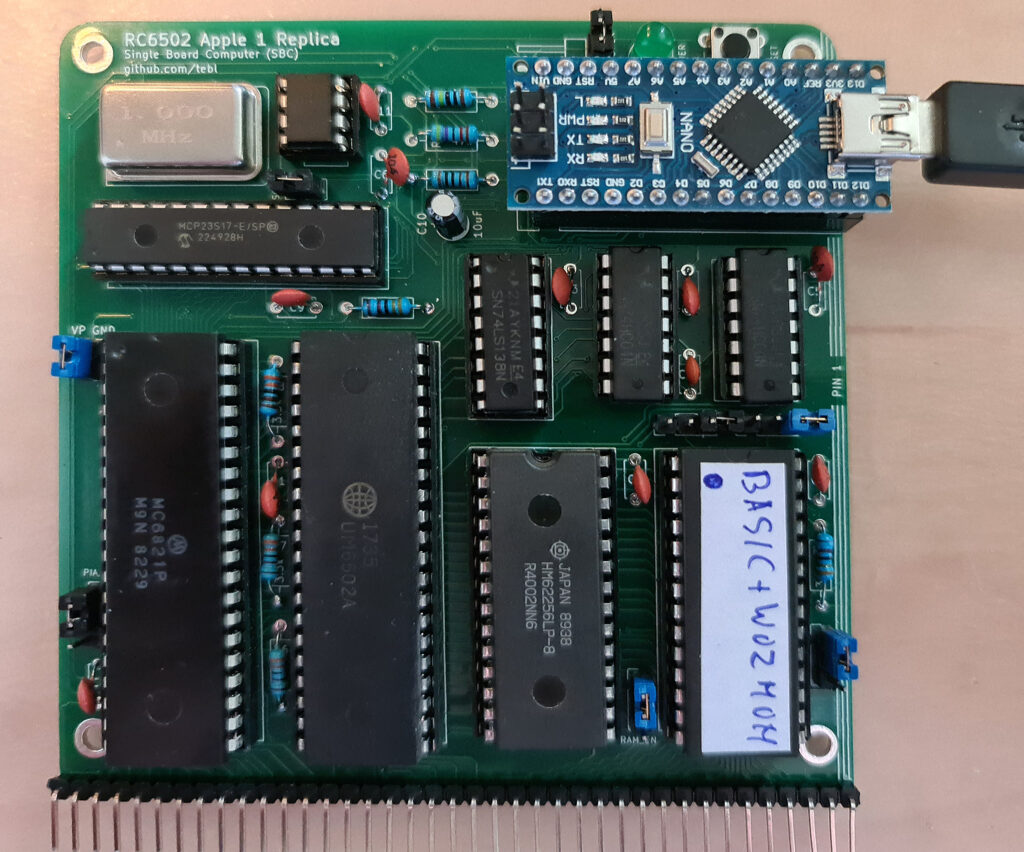
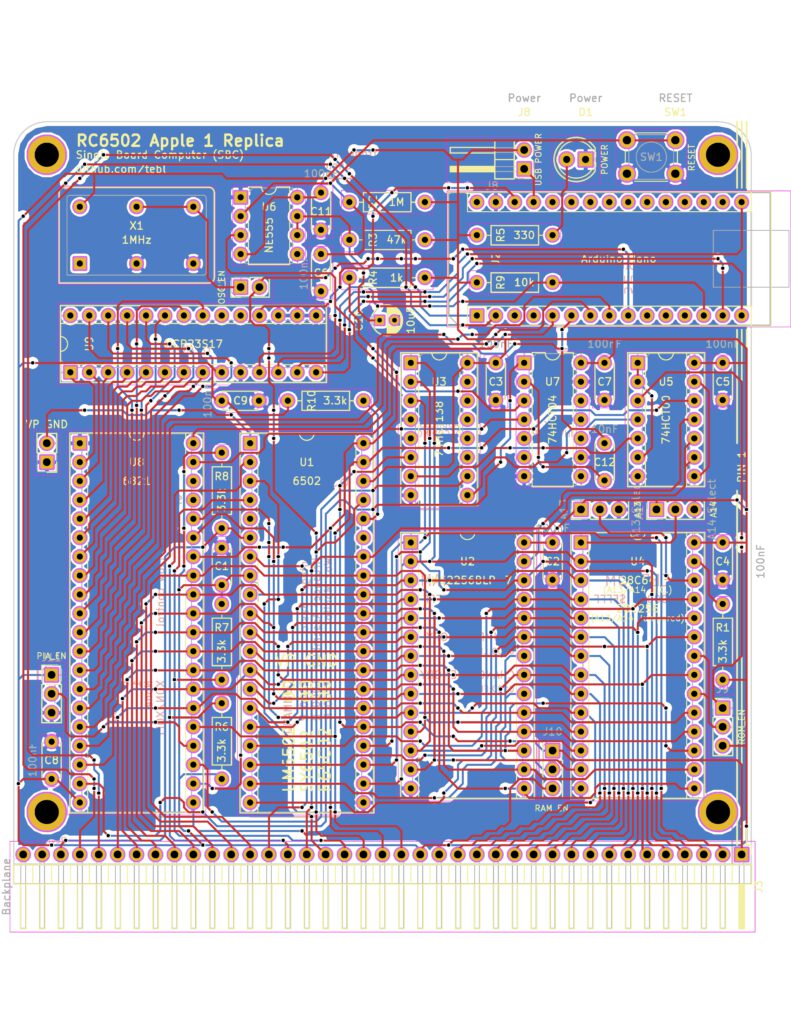

I have acquired a Commdore Chessmate! Working well.
Michael Gardi and Stephen Crane are working on Chessmate emulators. Micheal aims for a physical identical one, Stephen uses cheap but powerfull microntrollers. My Chessmate
More on the Chessmate, and the 6530 024 RRIOT (the ROM contains the opening book!) here. 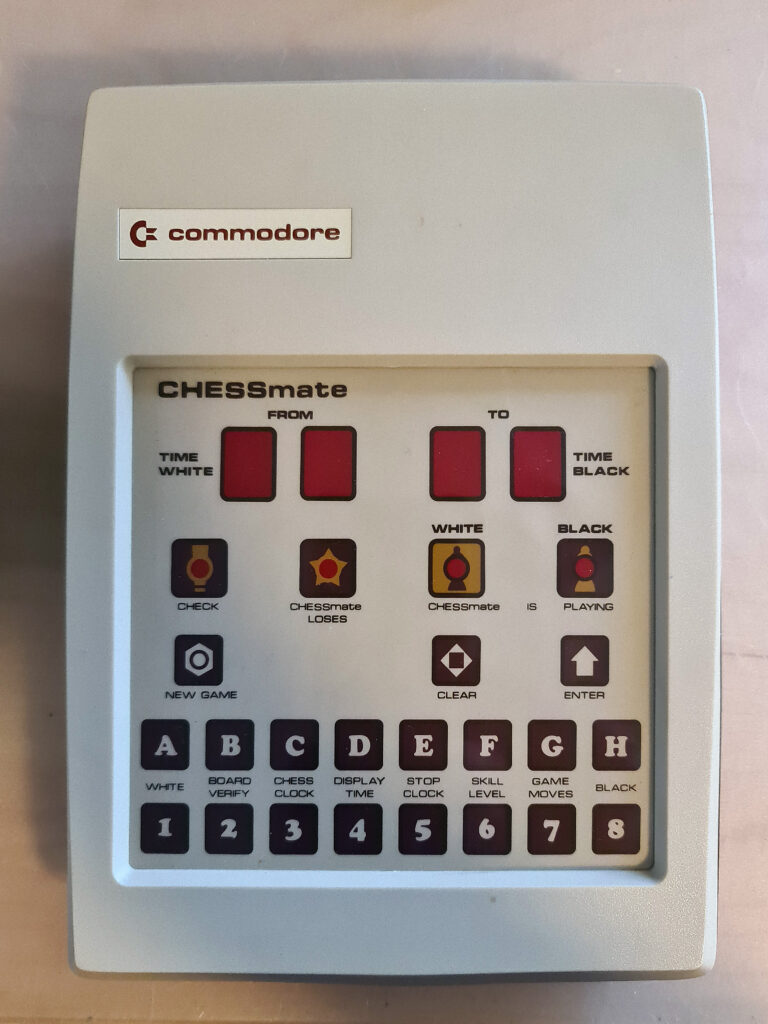
The Apple 1 and the KIM-1 are some of the earliest 6502 systems made.
Both are desirable, Apple 1’s sell for lots of $$$ and KIM-1s are getting more expensive.
Luckily we can build a KIM-1 clone that is either cheap and compatible, like the PAL-1, or a bit more authentic as the various KIM-1 boards.
Anyway, a clone has the KIM ROMs, and in E(E)PROM, to make it a KIM-1 clone. Altering is not done, you loose that unique spartan user interface!
The Apple 1 has also a monitor program, often called Wozmon to honor the genius of Steve Wozniak.
And you can combine both user interfaces on a not expanded KIM-1 clone!
I also included the Wozmon as a Setting in the KIM-1 Simulator.
KIM-1 and TIM Simulator have seen a small update.
Improvements on console handling and little annoyances. Focal added as programming language, for KIM-1 and TIM!
The Apple 1 Monitor, wozmon is now available as a Setting to be added the not used space in the 6530-003 tape ROM.
KIM-1 Simulator 1.4.0
TIM Simulator 0.6beta
Convert Hex Formats 2.8 (bundled also with simulators)
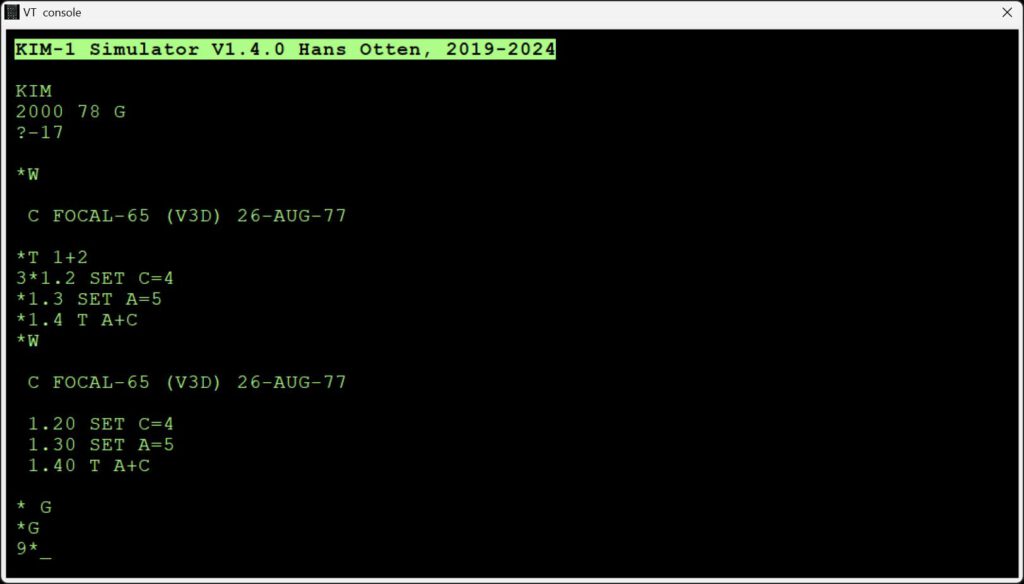
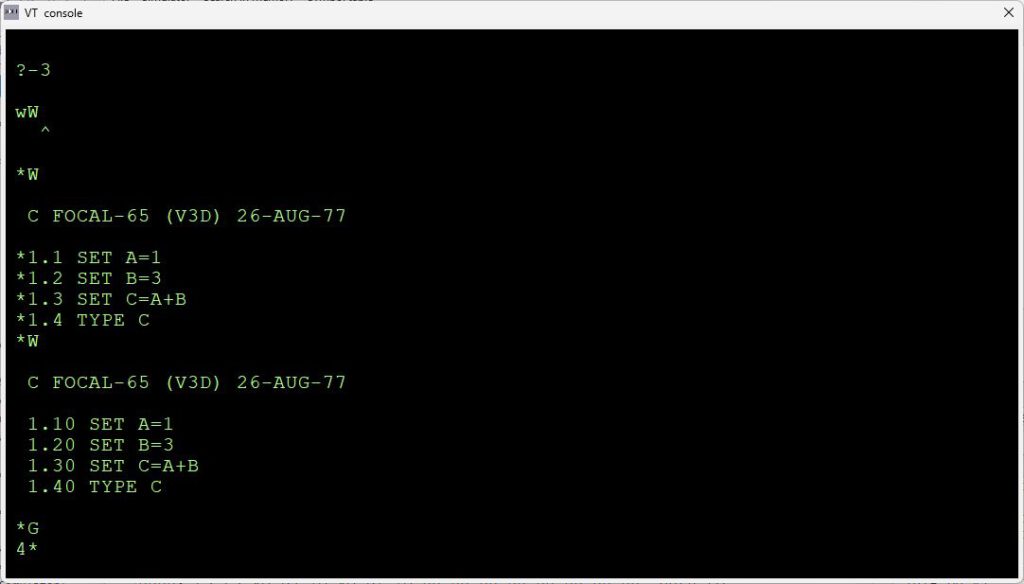
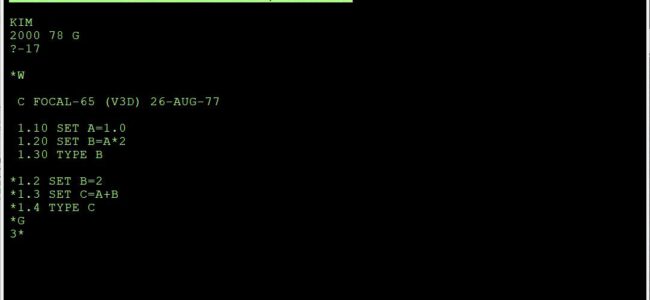
Focal on the 6502, a page on this small language, originating for Digital Equipment.
A small interpreter (about 5K) for a convenient interpreted language. Floating point 9 digit accuracy. At least two versions were distributed around 1977, one by Aresco, called “Focal V3D” and another by the Program Exchange as representative of the Denver 6502 Group, often called “Focal-65E”
Latest addition is a reconstruction of the source, by Wayne Wall of the Denver 6502 Group in 1977, of Focal V3D for the TIM to binary, and a port to the KIM-1.
Based upon a listing of the TIM Focal-65 from 1977 and a Focal-65 User manual, repaired and cleaned up.
And that enabled the reconstruction of the soource Focal-65 V3D as distributed by Aresco!


Thanks to Dallas Shell I have added the 1984 and 1988 catalog to the John Bell Engineering pages.
Also a hand drawn and official circuit diagram of the 82-300 SBC.
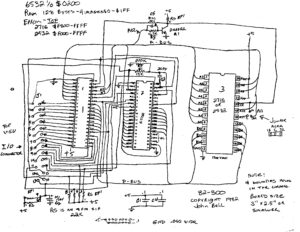
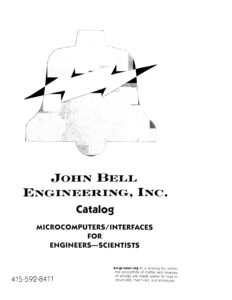
I have added a page on LJ Technical Learning’s Digiac line of 6502 systems.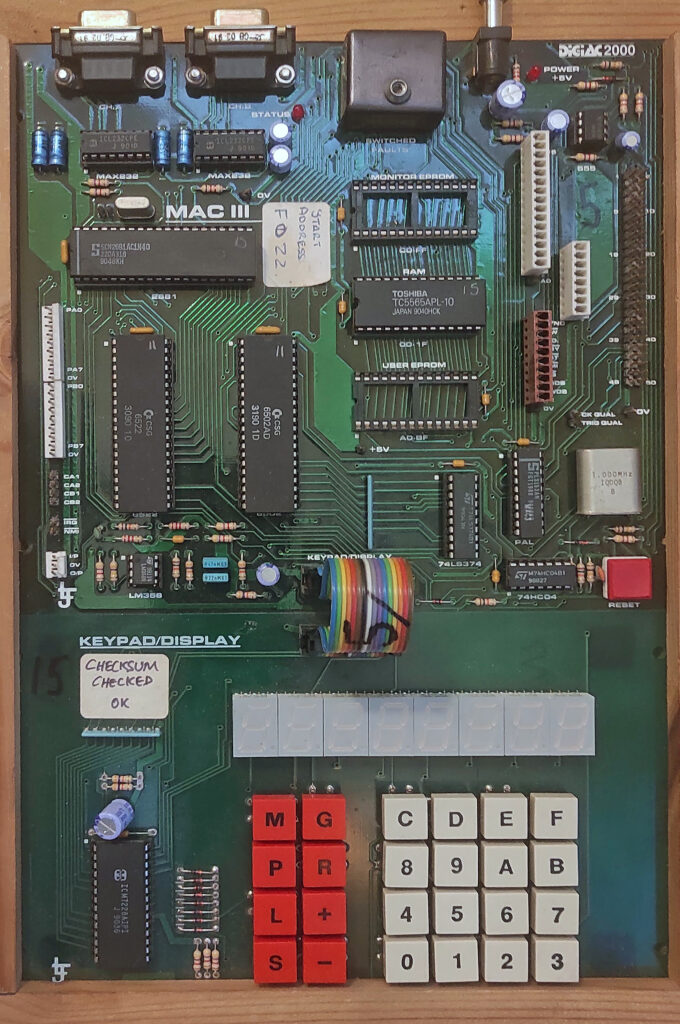
I have made some small updates to four of my programs.
Updates are bugfixes, cosmetic changes to also to let Raspberry Pi OS versions work, a nicer looking Windows setup and in general bringing all the programs to the same level.
Convert 8 bits hex formats V 2.7
KIM-1 Simulator V 1.3.9
TIM Superjolt Simulator V 0.5
SerialTester V 1.1
